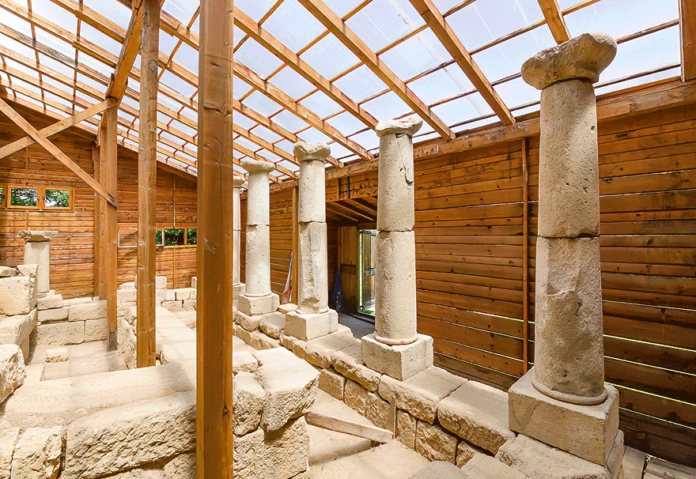Discover Chetinyovata Mogial: A Magnificent Thracian Complex
Only 4 km from Starosel, the Thracian Temple Complex in Chetinyovata Mogila dates back to the 5th and 4th centuries BC. Discovered in 2000, this complex is the oldest royal Thracian site with a mausoleum ever found.
Temples, Burials, and the Krepis Wall
The complex features six underhill temples, four unique structures, and several royal burials. Tourists can visit the grand temple at Chetinyovata Mogila and the Horizon temple. A granite krepis wall encloses the hill, symbolizing the sun in Thracian beliefs.
A Rich Architectural Experience
Visitors can admire the temple’s entrance, parade staircase, and lion-adorned pedestals. Inside, the round hall displays ten decorative semi-columns and triglyphs with blue and red accents. The mound’s north part houses a wine and water warehouse.
Nearby Attractions and Museums
Surrounding rock temples and mounds showcase the region’s history. Artifacts discovered during archaeological excavations can be viewed at the National History Museum and the Archaeological Museum in Sofia. Souvenirs and informational materials are available on-site.
The Horizon Mound – Another Unique Thracian Temple
Located 1.5 km from Starosel, the Horizon Mound is the only known Thracian temple with a colonnade. Ten columns rest on a foundation with two cylinders and an early Doric-style capital. The grave of a high-ranking Thracian contains bronze arrowheads, silver beads, and gold plates, highlighting its importance.
Immerse Yourself in Ancient History
Visit the Thracian Temple Complex in Starosel to explore Chetinyovata Mogila and the Horizon temple. Guided tours provide a comprehensive experience of Thracian culture and architecture.
Chetinyovata Mogila Throughout the Centuries
The Chetinyova mound ceased to function and experienced partial destruction. Fragments of a black-painted kantharos dating to the second to the third quarter of the 4th century BC were found in the corridor, along with two amphorae fragments from Chios and Mende, dating to the 50-the 40s of the 4th century BC. Coins discovered on the mound’s surface date back to the time of Lysimachus, around 306/305-301/300 BC.



